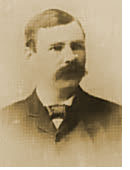

A best-seller in the 1890s, The Damnation of Theron Ware,
or Illumination as it is known in England, was heralded
as “the great American novel,” for its portrayal of
the people--their speech, customs, and beliefs--who inhabit the
Mohawk Valley in upstate New York, and as “anti-American”
in its subversion of the traditional American myths of the “American
Adam” and the “self-made man.”
Rich in complexities, The Damnation of Theron Ware
is the story of a Methodist minister who loses his faith when
he makes the acquaintance of a Catholic priest, a post-Darwinian
scientist, a New Woman, and a pragmatic con artist. In the end,
critics are in disagreement about the extent of Theron Ware’s
damnation or illumination and the degree to which his new friends
are responsible for changes in his beliefs and behavior.
An important work of American fiction that deserves greater critical
attention, The Damnation of Theron Ware must be read
within its historical, literary, and cultural context. Significant
events and discoveries in the fields of science, technology, religion,
philosophy, art, and literature shaped Frederic’s thinking
and writing, particularly the events and characters of The
Damnation of Theron Ware. An understanding of this milieu
is critical to understanding the issues of this topical yet universal
masterpiece.
A study guide with an annotated bibliography of criticism devoted
specifically to The Damnation of Theron Ware, this
ongoing project and research tool is divided into six main
sections: (1)
the home page, which briefly introduces users to the site, identifies
the scope of the project, and provides links to other pages;
(2)
“Harold Frederic,” which includes a biography
of the author, a timeline of significant
events during his lifetime, a select bibliography
of his writing, and a sampling of interviews with and articles
on Frederic
as author and critic; (3) “Bibliographical
Studies,” which lists bibliographies, checklists,
catalogues, critical overviews, and online resources; (4) “The
Damnation of Theron Ware,” which includes a discussion
of the contemporaneous critical
reception
of the novel, an annotated bibliography
of criticism in list form and broken down by subject, a
bibliography of dissertations
and theses,
and recommended discussion questions
or topics for essays; (5) a “Glossary,”
which includes terms that may be unfamiliar to students; and
(6)
“Links of Interest,” which
directs users to other websites relevant to a study of The
Damnation of Theron Ware.
Partial material is included on contemporaneous reviews (a few
are cited in “Critical Reception”
to give readers a sense of the literary environment in which the
novel appeared) and dissertations and theses (a complete bibliography
is provided, but without annotations because of the difficulty
of obtaining the works from libraries). Hopefully, a section listing
conference papers on The Damnation of Theron Ware can
be added as users contribute bibliographical entries.
I owe a debt of gratitude to those scholars who have invested
countless hours researching and compiling the bibliographies,
checklists, catalogues, critical overviews, and online resources
that have served as the foundation for my own work on Frederic’s
novel.
“Harold Frederic’s The Damnation of Theron Ware: A
Study Guide with Annotated Bibliography” is a Master’s
Thesis intended as a research tool for high school and undergraduate
students and their teachers.
Submissions, either annotated bibliographical entries or titles,
from authors who have written about The Damnation of Theron
Ware or from anyone who is aware of criticism that has
been inadvertently overlooked in this website, are welcome.
Respondents
will be credited for their contributions. I particularly welcome
abstracts of dissertations and theses, since these works are
not
always readily available from libraries. Suggestions, comments,
and corrections are also welcome.
Thank you for your assistance in this ongoing project.

![]()

